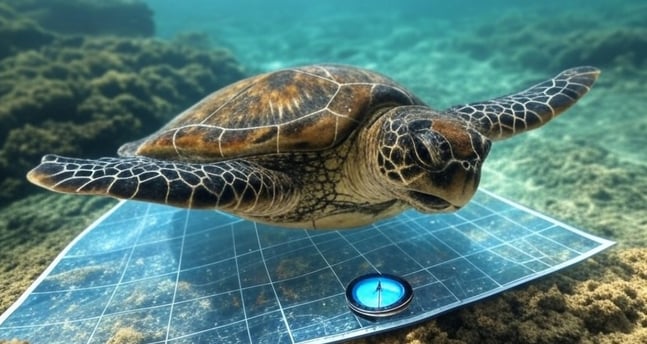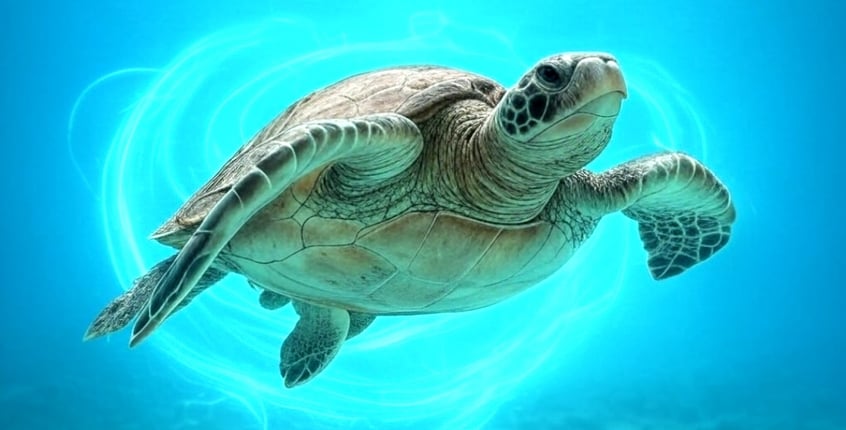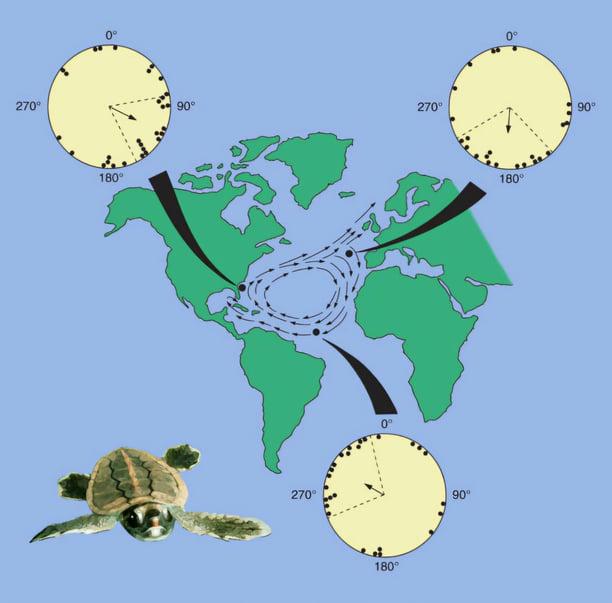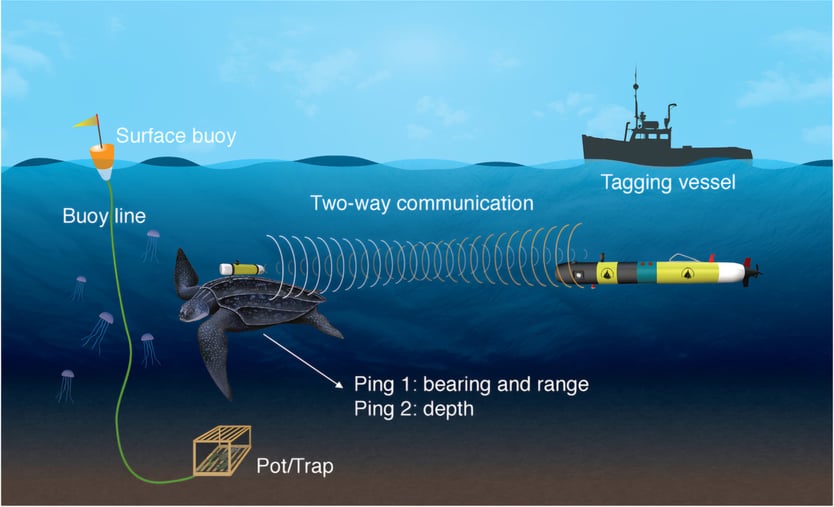How Sea Turtles Use Earth’s Magnetic Field to Navigate the Ocean
Sea turtles use Earth’s magnetic field to navigate, relying on a learned map and compass. RF signals disrupt their compass, raising concerns about human impact on migration also know how green turtle navigate.
BLOGS-RATHBIOTACLAN


Sea Turtles Use Magnetic ‘map’ and ‘compass’ To Navigate The Ocean
Sea turtles use the earth's magnetic field to orient themselves on the magnetic map and geolocate using a compass at sea.
Sea turtles are well acquainted with their impressive migrations across great oceans with remarkable fidelity in the absence of any apparent landmarks. Scientists have long known that these marine reptiles use Earth’s magnetic field to navigate, but the exact mechanism remains a mystery. A breakthrough, landmark survey study, in Nature, now demonstrated that the most prevalent sea turtle species that nests in the United States (the loggerhead sea turtle) can learn the magnetic field of any location and apply this information to go back to significant nesting and foraging grounds.
Magnetic Memory and Migration
Aforementioned studies found that turtles have a tendency to revisit the same areas, and use magnetic fields for their local positioning. However, for the first time the present work has demonstrated that loggerhead remember and learn magnetic fields actively and in the context of food cues. Researchers found that captive juvenile turtles exhibited a conditioned response to magnetic fields they had previously associated with feeding, displaying what the team described as a “turtle dance” in anticipation of food.
This discovery highlights how loggerheads develop a mental map based on Earth's magnetic field, allowing them to locate key foraging areas even after long migrations. The ability to maintain these magnetic coordinates across several months shows that sea turtles possess an extremely sophisticated memory-based navigation system.
The Two Magnetic Systems:
Map and Compass
The most significant finding of the study is that sea turtles have exploited two distinct magnetic systems:
A magnetic map, which allows them to locate themselves in the ocean.
Such an animal can use a magnetic compass to determine its route of orientation.
In an effort to test whether these two systems are also exerted in an autonomous manner, investigators exposed turtles with radiofrequency (RF) radiation, which is a type of electromagnetic radiation emitted by mobile phones and radio transceivers. The effect was dramatic—the magnetic map showed no change but the compass interfered. When exposed to an RF-perturbed field, turtles showed chaotic swimming rather than their characteristic directional swimming patterns, and thus they indicate that the turtles' internal compass not only depends on a different biological mechanism than the magnetic map, but it depends on a much different mechanism as well.


How Turtles Detect Magnetic Fields
To further understand how turtles process magnetic cues, the authors compared two key properties of the geomagnetic field of the Earth:
Inclination (the tilt of the field lines relative to Earth's surface).
Intensity – the strength of the magnetic field.
By creating mismatched magnetic fields—swapping inclination and intensity values from different geographic locations—scientists discovered that turtles only recognized a place when both factors matched. This result indicates that loggerheads rely on a blend of inclination and intensity to orient themselves.
This dual-system navigation is not unique to sea turtles. Birds and amphibians have been previously revealed to rely on similar magnetoreception systems, suggesting a convergent evolution among migratory vertebrates.
ADVERTISEMENTS
ADVERTISEMENTS


Training Turtles to Recognize Magnetic Signatures
To confirm their findings, investigators conducted an experiment with young loggerheads. They placed the turtles in a tank in which supplied magnetic coils recreated the Atlantic Ocean magnetic field. For two months, the researchers manipulated the magnetic field to simulate various oceanic locations between the North American coastline and the Gulf of Mexico.
The key twist?
Turtles were fed only when the magnetic field pointed to a specific place. When the turtles recognized the familiar magnetic signature, they flapped, opened their mouths, and spun in circles in anticipation of food—a behavior dubbed the “turtle dance”. This response remained strong even four months after the experiment, proving that turtles retain magnetic memories for extended period.
A New Theory of Magnetoreception
Even if the experiment achieves the potential and capability of turtles to learn and retain a magnetic map, the mechanism of turtles to detect magnetic field still remains unclear. A hypothesis is that animals detect magnetic fields through a photochemical reaction involving photoactive species. However, when researchers attempted to disrupt this process using RF waves, the turtles’ magnetic map remained unaffected, suggesting that their ability to recognize magnetic coordinates does not rely on the same mechanism as their compass.
To try and get at this question, investigators studied whether RF signals would influence turtle's compass by recapitulating the magnetic field associated with Cape Verde, a location in the world purportedly home to loggerhead nesting. Consistent with predictions, the turtles' compass was disrupted by RF waves exposure resulting in the turtles becoming disoriented in a rather randomized manner, but the way-based navigation by the turtles remained unchanged by RF waves exposure.
The Implications of Dual Magnetoreception
This discovery has profound implications. It not only suggests, above, that sea turtles have two separate magnetic receptors, but it also throws some doubt on the systems from which might other migratory animals, for instance, birds and amphibians, also have two separate systems.
The researchers propose a working hypothesis:
The magnetic compass likely depends on chemical magnetoreception.
The magnetic map is based on a different, but still unknown, mechanism.
This hypothesis opens new avenues of research on how animals move through large regions using the Earth's geomagnetic field a topic that has engaged scientists for many years.
ADVERTISEMENTS
ADVERTISEMENTS
Conservation Concerns
Results also raise a concern about the human impact on sea turtle pathfinding. As boating increases and electronic device use near nesting beaches, the magnetic compass of turtles may be interfered with, and affect migratory success. Lead study author Dr. Kayla Goforth, Texas A&M University, postdoc researcher emphasizes that RF emissions should be kept to a minimum in the critical habitat where turtles reside, in an attempt to safeguard their existence, as such venerable marine lives.
This information can be used to contribute data to the science of sea turtle (and other taxa) navigation of bodies of water that lack obvious physical waypoints, Dr. Daniel Evans, research biologist at the Sea Turtle Conservancy, who was off the records, said.
With growing evidence that the directional and locative behaviour of migrants relies on the Earth's magnetics field, this paper is a significant step in the direction of understanding animal navigation.


Graphic representation of the TurtleCam system. Continuous, two-way communication between the leatherback turtle's transponder and the vehicle enables the vehicle to locate, follow and film the tagged turtle while simultaneously collecting habitat data along the turtle's path. A camera on the turtle-borne transponder collects video from the turtle's perspective. Turtles were tracked in areas with fixed fishing gear.
[Sea turtles use magnetic ‘map’ and ‘compass’ to navigate the ocean]
REFERENCE :
doi: https://doi.org/10.1038/d41586-025-00410-x
PUBLISHED IN NATURE JOURNAL
ADVERTISEMENTS
ADVERTISEMENTS

Drop Us a Line
We’d Love to Hear from You
